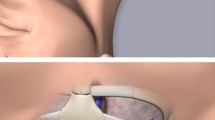Abstract
Objective
Short-term, noncuffed, percutaneously inserted central venous catheters (CVCs) are widely used and cause more than 250,000 bloodstream infections (BSIs) in hospitals each year in the United States. We report a prospective study undertaken to determine the pathogenesis of CVC-related BSI.
Design and setting
Prospective cohort study in a university hospital 24-bed medical-surgical intensive care unit.
Patients and participants
Patients participating in two randomized trials during 1998–2000—one studying the efficacy of a 1% chlorhexidine–75% alcohol solution for cutaneous antisepsis and the other a novel chlorhexidine-impregnated sponge dressing—formed the study population; CVC-related BSIs were considered to be extraluminally acquired if concordance was identified solely between isolates from catheter segments, skin, and blood cultures and intraluminally acquired if concordance was demonstrated only between hub or infusate and blood culture isolates, as confirmed by DNA subtyping of isolates from blood and catheter sites or infusate.
Results
Of 1,263 catheters (6075 CVC days) prospectively studied, 35 (2.7%) caused BSI (5.9 per 1000 CVC days); 27 were caused by coagulase-negative staphylococci. Overall, 45% of infections were extraluminally acquired, 26% were intraluminally derived, and the mechanism of infection was indeterminate in 29%. In the pooled control groups of the two trials, 25 CVC-related BSIs occurred (7.0 per 1000 CVC days), of which 60% of infections were extraluminally acquired, 12% were intraluminally derived and 28% were indeterminate. In contrast, CVC-related BSIs in the treatment groups were most often intraluminally derived (60%, p=0.006).
Conclusions
Most catheter-related BSIs with short-term percutaneously inserted, noncuffed CVCs were extraluminally acquired and derived from the cutaneous microflora. Strategies achieving successful suppression of cutaneous colonization can substantially reduce the risk of catheter-related BSI with short-term CVCs.


Similar content being viewed by others
References
Maki DG, Mermel LA (1998) Infections due to infusion therapy. In: Bennet JV, Brachman PS, editors. Hospital Infections. Lippincott-Raven, Philadelphia, pp 689–724
Raad I (1998) Intravascular catheter-related infections. Lancet 351:893–898
Mermel LA (2000) Prevention of intravascular catheter-related infections. Ann Intern Med 132:391–402
Smith RL, Meixler SM, Simberkoff MS (1991) Excess mortality in critically ill patients with nosocomial bloodstream infections. Chest 100:164–167
Arnow PM, Quimosing EM, Beach M (1993) Consequences of intravascular catheter sepsis. Clin Infect Dis 16:778–784
Pittet D, Tarara D, Wenzel RP (1994) Nosocomial bloodstream infection in critically ill patients: excess length of stay, extra costs and attributable mortality. JAMA 271:1598–1601
Collignon PJ (1994) Intravascular catheter associated sepsis: a common problem. The Australian Study on Intravascular Catheter Associated Sepsis. Med J Aust 161:374–378
Rello J, Ochagavia A, Sabanes E, Roque M, Mariscal D, Reynaga E, Valles J (2000) Evaluation of outcome of intravenous catheter-related infections in critically ill patients. Am J Respir Crit Care Med 162:1027–1030
Maki DG (1988) Sources of infection with central venous catheters in an ICU: a prospective study. In: Program and abstracts of the 28th Interscience Conference on Antimicrobial Agents and Chemotherapy, Los Angeles
Raad I, Costerton W, Sabharwal U, Sacilowski M, Anaissie E, Bodey GP (1993) Ultrastructural analysis of indwelling vascular catheters: a quantitative relationship between luminal colonization and duration of placement. J Infect Dis 168:400–407
Marrie TJ, Costerton JW (1984) Scanning and transmission electron microscopy of in situ bacterial colonization of intravenous and intraarterial catheters. J Clin Microbiol 19:687–693
Cooper GL, Hopkins CC (1985) Rapid diagnosis of intravascular catheter-associated infection by direct Gram staining of catheter segments. N Engl J Med 312:1142–1147
Sitges-Serra A, Puig P, Linares J, Perez JL, Farrero N, Jaurrieta E, Garau J (1984) Hub colonization as the initial step in an outbreak of catheter-related sepsis due to coagulase negative staphylococci during parenteral nutrition. JPEN J Parenter Enteral Nutr 8:668–672
Sitges-Serra A, Linares J, Perez JL, Jaurrieta E, Lorente L (1985) A randomized trial on the effect of tubing changes on hub contamination and catheter sepsis during parenteral nutrition. JPEN J Parenter Enteral Nutr 9:322–325
Linares J, Sitges-Serra A, Garau J, Perez JL, Martin R (1985) Pathogenesis of catheter sepsis: a prospective study with quantitative and semiquantitative cultures of catheter hub and segments. J Clin Microbiol 21:357–360
Maki DG, Narans LL, Knasinski V, Kluger DM (2000) Prospective randomised, investigator-masked trial of a novel chlorhexidine-impregnated disk (Biopatch) on central venous and arterial catheters. In: Proceedings and Abstracts of the Fourth International Decennial Conference on Nosocomial and Healthcare-Associated Infections, Atlanta
Maki DG, Knasinski V, Narans LL, Gordon BJ (2001) A randomized trial of a novel 1% chlorhexidine-75% alcohol tincture versus 10% povidone-iodine for cutaneous disinfection with vascular catheters. In: Proceedings and Abstracts of the 31st Annual Society for Healthcare Epidemiology of America Meeting, Toronto
Knaus WA, Draper EA, Wagner DP, Zimmerman JE (1985) APACHE II: a severity of disease classification system. Crit Care Med 13:818–829
Maki DG, Stolz SM, Wheeler S, Mermel LA (1997) Prevention of central venous catheter-related bloodstream infection by use of an antiseptic-impregnated catheter. A randomized, controlled trial. Ann Intern Med 127:257–266
Balows LE, Hausler W, Shadomy H (1991). Manual of clinical microbiology, 5th edn. American Society for Microbiology, Washington
Alvarado CJ, Stolz SM, Maki DG (1991) Nosocomial infection from contaminated endoscopes: a flawed automated endoscope washer. An investigation using molecular epidemiology. Am J Med 91 [Suppl 3B]:S725–S805
Tenover FC, Arbeit RD, Goering RV, Mickelsen PA, Murray BE, Persing DH, Swaminathan B (1995) Interpreting chromosomal DNA restriction patterns produced by pulsed-field gel electrophoresis: criteria for bacterial strain typing. J Clin Microbiol 33:2233–2239
Maki DG, Goldman DA, Rhame FS (1973) Infection control in intravenous therapy. Ann Intern Med 79:867–887
Cooper GL, Schiller AL, Hopkins CC (1988) Possible role of capillary action in pathogenesis of experimental catheter-associated dermal tunnel infections. J Clin Microbiol 26:8–12
Sitges-Serra A, Linares J, Garau J (1985) Catheter sepsis: the clue is the hub. Surgery 97:355–357
Maki DG, Jarrett F, Sarafin HW (1977) A semiquantitative culture method for identification of catheter-related infection in the burn patient. J Surg Res 22:513–520
Maki DG, Hassemer CA (1981) Endemic rate of fluid contamination and related septicemia in arterial pressure monitoring. Am J Med 70:733–738
Crnich CJ, Maki DG (2002) The promise of novel technology for the prevention of intravascular device-related bloodstream infection. I. Pathogenesis and short-term devices. Clin Infect Dis 34:1232–1242
Mermel LA, McCormick RD, Springman SR, Maki DG (1991) The pathogenesis and epidemiology of catheter-related infection with pulmonary artery Swan-Ganz catheters: a prospective study utilizing molecular subtyping. Am J Med 91 [Suppl 3B]:1897–1205
Bjornson HS, Colley R, Bower RH, Duty VP, Schwartz-Fulton JT, Fischer JE (1982) Association between microorganism growth at the catheter insertion site and colonization of the catheter in patients receiving total parenteral nutrition. Surgery 92:720-72-7
Cheesbrough JS, Finch RG, Burden RP (1986) A prospective study of the mechanisms of infection associated with hemodialysis catheters. J Infect Dis 154:579–589
Maki DG (1998) A prospective study of the pathogenesis of PICC-related BSI. In: Proceedings and Abstracts of the 38th Interscience Conference of Antimicrobial Agents and Chemotherapy, San Diego
Mahieu LM, De Dooy JJ, Lenaerts AE, Leven MM, De Muynck AO (2001) Catheter manipulations and the risk of catheter-associated bloodstream infection in neonatal intensive care unit patients. J Hosp Infect 48:20–26
Maki DG, Ringer M, Alvarado CJ (1991) Prospective randomised trial of povidone-iodine, alcohol, and chlorhexidine for prevention of infection associated with central venous and arterial catheters. Lancet 338:339–343
Garland JS, Alex CP, Mueller CD, Otten D, Shivpuri C, Harris MC, Naples M, Pellegrini J, Buck RK, McAuliffe TL, Goldmann DA, Maki DG (2001) A randomized trial comparing povidone-iodine to a chlorhexidine gluconate-impregnated dressing for prevention of central venous catheter infections in neonates. Pediatrics 107:1431–1436
Safdar N, Kluger DM, Maki DG (2002) A review of risk factors for catheter-related bloodstream infection caused by percutaneously inserted, noncuffed central venous catheters: implications for preventive strategies. Medicine (Baltimore) 81:466–479
Moro ML, Vigano EF, Cozzi Lepri A (1994) Risk factors for central venous catheter-related infections in surgical and intensive care units. The Central Venous Catheter-Related Infections Study Group. Infect Control Hosp Epidemiol 15:253–264
Mahieu LM, De Muynck AO, Leven MM, De Dooy JJ, Goossens HJ, Van Reempts PJ (2001) Risk factors for central vascular catheter-associated bloodstream infections among patients in a neonatal intensive care unit. J Hosp Infect 48:108–116
Franceschi D, Gerding RL, Phillips G, Fratianne RB (1989) Risk factors associated with intravascular catheter infections in burned patients: a prospective, randomized study. J Trauma 29:811–816
Almirall J, Gonzalez J, Rello J, Campistol JM, Montoliu J, Puig de la Bellacasa J, Revert L, Gatell JM (1989) Infection of hemodialysis catheters: incidence and mechanisms. Am J Nephrol 9:454–459
Merrer J, De Jonghe B, Golliot F, Lefrant JY, Raffy B, Barre E, Rigaud JP, Casciani D, Misset B, Bosquet C, Outin H, Brun-Buisson C, Nitenberg G (2001) Complications of femoral and subclavian venous catheterization in critically ill patients: a randomized controlled trial. JAMA 286:700–707
Charalambous C, Swoboda SM, Dick J, Perl T, Lipsett PA (1998) Risk factors and clinical impact of central line infections in the surgical intensive care unit. Arch Surg 133:1241–1246
Maki DG (1990) Marked differences in skin colonization of insertion sites for central venous, arterial, and peripheral IV catheters: the major reason for differing risks of catheter-related infection? In: Programs and Abstracts of the Third International Conference on Nosocomial Infections, Atlanta
Eggimann P, Harbarth S, Constantin MN, Touveneau S, Chevrolet JC, Pittet D (2000) Impact of a prevention strategy targeted at vascular-access care on incidence of infections acquired in intensive care. Lancet 355:1864–1868
Sherertz RJ, Ely EW, Westbrook DM, Gledhill KS, Streed SA, Kiger B, Flynn L, Hayes S, Strong S, Cruz J, Bowton DL, Hulgan T, Haponik EF (2000) Education of physicians-in-training can decrease the risk for vascular catheter infection. Ann Intern Med 132:641–648
Timsit JF, Sebille V, Farkas JC, Misset B, Martin JB, Chevret S, Carlet J (1996) Effect of subcutaneous tunneling on internal jugular catheter-related sepsis in critically ill patients: a prospective randomized multicenter study. JAMA 276:1416–1420
Timsit JF, Bruneel F, Cheval C, Mamzer MF, Garrouste-Orgeas M, Wolff M, Misset B, Chevret S, Regnier B, Carlet J (1999) Use of tunneled femoral catheters to prevent catheter-related infection. A randomized, controlled trial. Ann Intern Med 130:729–735
Darouiche RO, Raad, II, Heard SO, Thornby JI, Wenker OC, Gabrielli A, Berg J, Khardori N, Hanna H, Hachem R, Harris RL, Mayhall G (1999) A comparison of two antimicrobial-impregnated central venous catheters. Catheter Study Group. N Engl J Med 340:1–348
Acknowledgements
This research was presented in part at the 42nd Interscience Conference on Antimicrobial Agents and Chemotherapy, 2002 and the 13th Annual Meeting of the Society for Healthcare Epidemiology of America, 2003.
Author information
Authors and Affiliations
Corresponding author
Additional information
Supported by an unrestricted gift for research from the Oscar Rennebohm Foundation of Madison, Wisconsin
Rights and permissions
About this article
Cite this article
Safdar, N., Maki, D.G. The pathogenesis of catheter-related bloodstream infection with noncuffed short-term central venous catheters. Intensive Care Med 30, 62–67 (2004). https://doi.org/10.1007/s00134-003-2045-z
Received:
Accepted:
Published:
Issue Date:
DOI: https://doi.org/10.1007/s00134-003-2045-z




